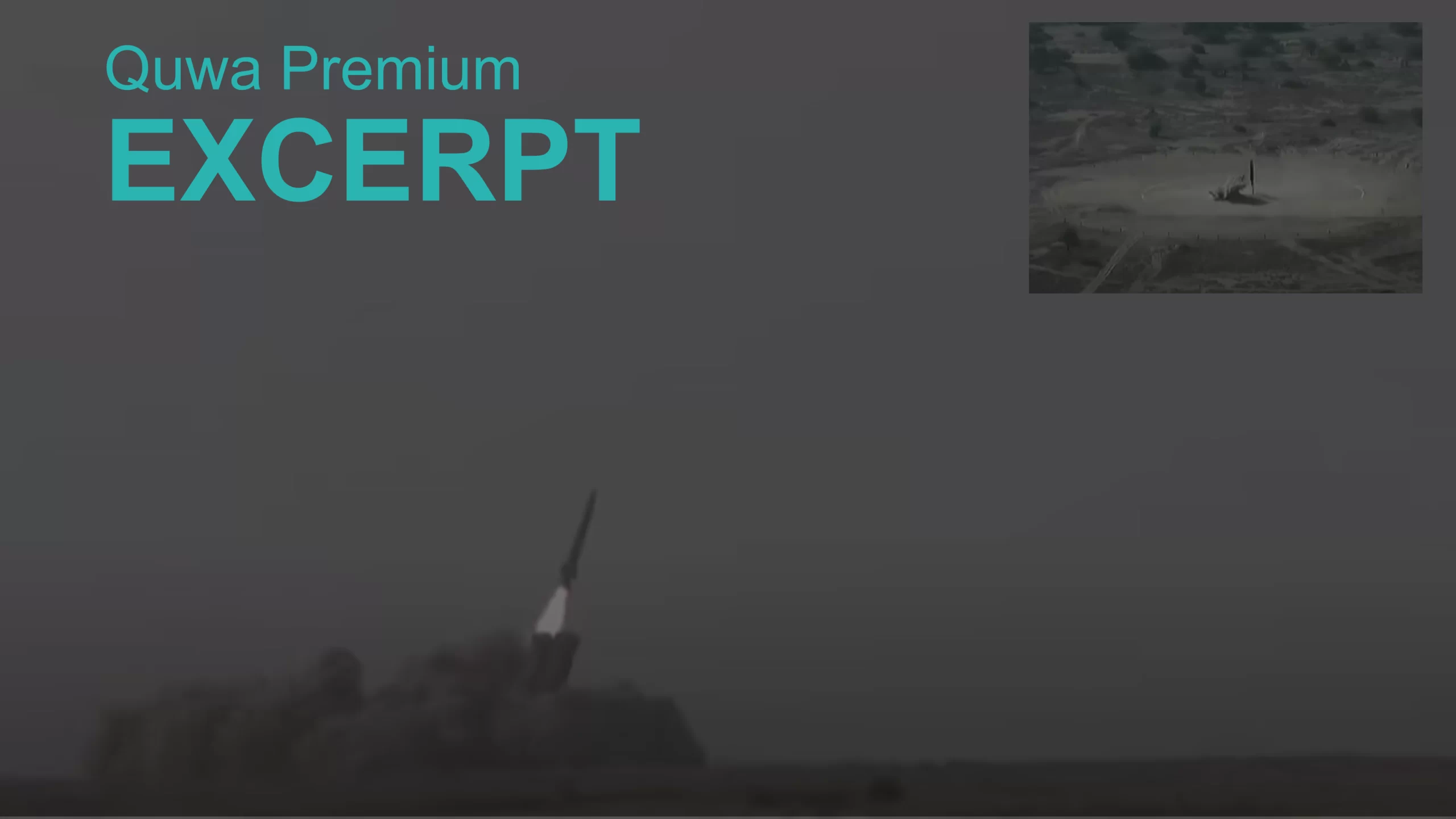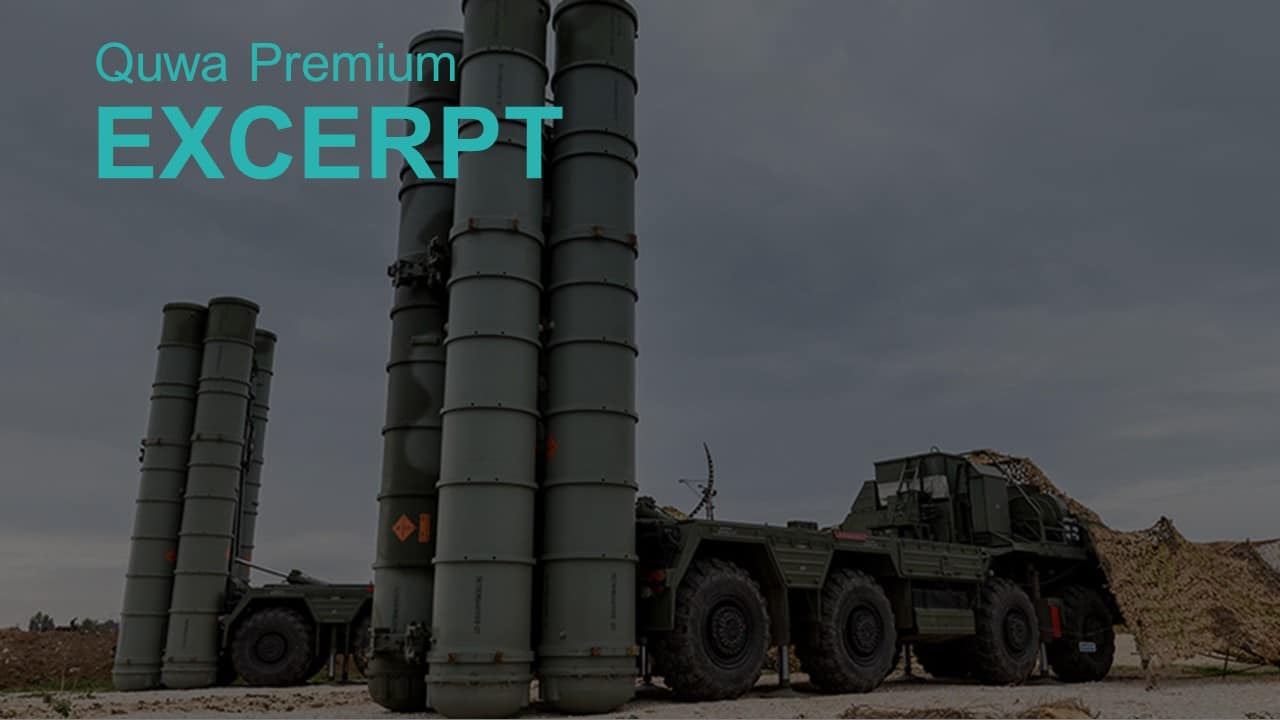5201Views

Pakistan Tests New Fatah-II Surface-to-Surface Missile
On 23 December 2023, the Pakistani military’s media department, Inter Services Public Relations (ISPR), announced the test firing of a new surface-to-surface missile (SSM) called the “Fatah-II.”
According to the ISPR, the Fatah-II has a range of 400 km and is “equipped with state-of-the-art avionics, sophisticated navigation system and unique flight trajectory.”
The Fatah-II is a new addition to Pakistan’s growing inventory of guided rockets, building upon the Fatah-I multiple launch rocket system (MLRS) and Nasr-series of short-range ballistic missiles (SRBM).
Though sharing the same core designation of “Fatah,” the Fatah-II does not appear to be a new variant of the Fatah-I. Rather, the ISPR’s visual footage shows that the Fatah-II is based on a different missile platform, not the Fatah-I line of MLRS. In 2023, Global Industrial and Defence Solutions (GIDS), the commercial arm representing a number of Pakistan’s state-owned defence contractors, showcased a “Fatah-II” that was an evident evolution of the Fatah-I. This earlier Fatah-II inherited the core design attributes of the Fatah-I, but with an improved range of over 250 km and accuracy of 10 m circular error probe (CEP), compared to the Fatah-I’s range and accuracy of 140 km and 50 m CEP, respectively.
In contrast, this ‘new’ Fatah-II not only offers a far greater range at 400 km, but it also seems to be a larger missile. For example, the Fatah-I used an eight-cell launch system (which the original Fatah-II design would have likely reused), while the new Fatah-II seems to leverage a twin-cell system. Finally, the design of the new Fatah-II also exhibits several key differences, such as the lack of fins on the nosecone, for example.
By giving an ostensibly different missile platform the same core designation of “Fatah,” Pakistan could be moving towards making the “Fatah” a family of guided rockets. Thus, it is possible that the original Fatah-II will be redesignated as a Fatah-I-based missile, like “Fatah-IB,” to represent its direct relationship to the Fatah-I. Overall, Pakistan’s investment in the Fatah series highlights the Pakistan Army’s growing focus to build its land-based stand-off range strike capabilities which, in turn, could reflect a broader military effort to building Pakistan’s conventional deterrence posture.
Unpacking the New Fatah-II
As noted earlier, the revised Fatah-II appears to be a larger missile compared to the original Fatah-II shown by GIDS in 2023. Interestingly, the new Fatah-II’s design seems to bear a resemblance to the CM-400AKG, an air-launched anti-ship rocket used by the Pakistan Air Force (PAF) through its JF-17 Thunder multi-role combat aircraft. However, the Fatah-II has a much longer stated range than the CM-400AKG (i.e., 400 km to the latter’s 250-280 km). Thus, the Fatah-II is unlikely to be identical to the CM-400AKG as, being a land-based missile, it would have a shorter range. Even if one accounts for an additional booster stage/rocket, it would, at best, match the CM-400AKG’s range, not surpass it.
If one was to assume a Chinese connection for the Fatah-II, then the closest missile matching its range as well as apparent size and design would be the B611M short-range ballistic missile (SRBM) or, potentially, its BP-12A variant. Like the Fatah-II, the BP-12A has offers a range of 400 km and, similarly, utilizes a two-cell launch cannister system. The Fatah-II bears general resemblance to the B611M and BP-12A, but it still seems to exhibit some differences. For example, the tail fins of the B611M and BP-12A are right at the end of their respective missile’s fuselages; however, the Fatah-II’s tail fins seem to be slightly further away from the rocket motor/exhaust area. Thus, the Fatah-II may be an original missile design.
While one should not discount the possibility of technical help from the Chinese, the Fatah-II simply does not fully match any known Chinese SRBM available for export. Moreover, there are reasons to believe that Pakistan had been working on a new line of conventional ballistic missiles for its own needs…
End of Excerpt (650/1,421 Words)
You can read the complete article by logging in (click here) or subscribing to Quwa Premium (click here).
Additional news and insights on Pakistan’s artillery capabilities:


